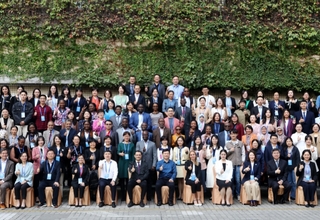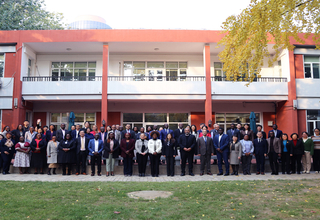By Dr. Justine Coulson, Representative of the United Nations Population Fund (UNFPA) in China
On May 14th, women of all ages are showered with gifts and love by their children and grandchildren as Mother’s Day is celebrated around the world. Amidst all this celebration, it is easy to forget the millions of women who want to have children but are unable to do so because either they, or their partner, live with infertility. Recent estimates suggest that 1 in 6 people will experience infertility (defined as 'the failure to achieve a pregnancy after 12 months or more of regular unprotected sexual intercourse') at some point in their lives, and infertility currently affects 48 million couples and 168 million individuals globally. Infertility rates are similar across countries and regions: whether a country is high-, middle- or low- income, infertility affects between 16-18% of adults. China is no exception with 17.6% of adults of reproductive age affected by infertility in 2020.
Despite the prevalence of infertility, improving the quality and availability of fertility care is frequently overlooked in national population policies. For governments that are grappling with low fertility and are considering ways to address the declining number of births in their national populations, priority is often given to family-friendly policies and subsidies based on the rationale that young couples are choosing not to have children due to the lack of affordable childcare, housing and education. Whilst these investments are welcome for people who want to have children but feel they can’t because of the high costs involved, this policy approach fails to address the needs of the large number of individual women and couples who are trying to start a family but are unable to do so because of infertility.
In 1978, the first baby in the world was born through in vitro fertilization (IVF) and 10 years later, the first baby through IVF was born in China. In 1994, when 179 countries, including China, adopted the Programme of Action of the International Conference on Population and Development, access to infertility prevention and treatment was recognized as a reproductive right and an essential component of a comprehensive package of sexual and reproductive health services. However, despite this global commitment to address infertility, coupled with the development of ever more effective Assisted Reproductive Technologies (ART) to treat infertility, almost 30 years later, we have not achieved equal and equitable access to fertility care for all women and men who need it.
In many low- and middle- income countries, services are still largely non-existent or only available in the main cities. Even where services exist, they are often only provided in the private health sector. Costs can be prohibitively high and couples must fund these as out-of-pocket expenses that in turn can put the household under high levels of financial stress. Where infertility diagnosis and treatment is provided in the public health system and covered by public health financing, men and women from certain groups, such as people with disabilities, single women and lesbian couples, can still find themselves excluded from services due to discriminatory social concepts of the ideal family.
In China, the availability of infertility treatment has grown rapidly since 2001. By the end of 2019, there were 517 assisted reproductive centres and 27 human sperm banks in Chinese mainland and the overall treatment success rate is on par with that of Europe and the US, with almost 29% of ART cycles resulting in a live birth. However, fertility treatment is not covered by health insurance and remains expensive at an average of ¥30,000 per cycle, but this could be about to change. In 2022, 17 departments, including the National Health Commission and National Health Insurance Bureau, issued the "Guiding Opinions on Further Improving and Implementing Positive Birth Support Measures" which included the recommendation that relevant social insurance systems, such as maternity insurance, should gradually include coverage of appropriate assisted reproductive technology services. Covering fertility treatment under public health insurance will ensure more equitable access for couples experiencing infertility in China.
Whilst equitable access to infertility diagnosis and treatment is critical, fertility treatment is not failproof and close to 70% of first-time ART cycles do not work. Emotional support and social acceptance for women and men facing the challenge of infertility is important. In some cultures, social norms dictate that parenthood is an essential aspect of adult life, and infertile couples, especially women, experience social stigma when they are unable to conceive and are seen as a ‘failure’. Research shows that women experiencing infertility are more likely to experience domestic violence and are more vulnerable to divorce initiated by their husband. For both partners in a couple experiencing infertility, failure to conceive can cause psychological distress. Men and women experiencing infertility need access not only to treatment for their infertility but also to supportive counselling services, and for women, infertility services should integrate screening and referrals for domestic violence. Also, recognising that the risk of infertility can be reduced by adopting healthy behaviours, such as not smoking, practising safe sex to avoid sexually transmitted infections and maintaining a healthy weight, fertility awareness should be incorporated into national sexuality education programmes in and out of school and in public health campaigns.
Ensuring equitable access to infertility prevention and treatment is critical to ensuring that individuals and couples can exercise their right to decide the number, timing and spacing of their children. This Mother’s Day, let’s remember those women around the world who want to become mothers but cannot due to the challenges of infertility, and let’s call on governments and societies to do more to support them and increase the availability of fertility care.
Note: This opinion piece was published on the China Daily website on 14 May 2023, link: https://www.chinadaily.com.cn/a/202305/14/WS6460c1cda310b6054fad2d7f.htm...




